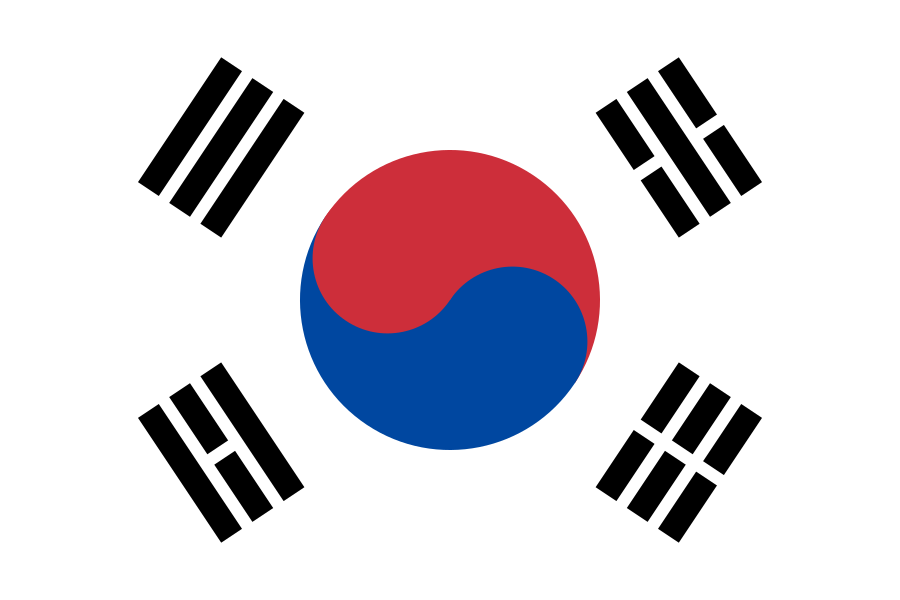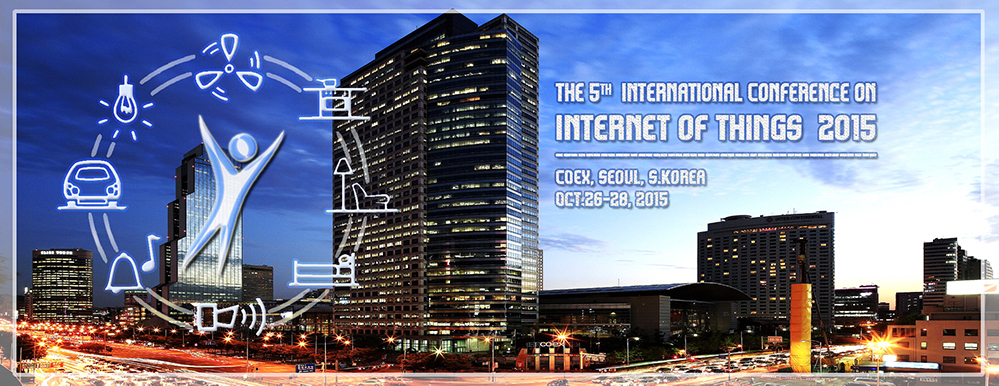Republic of Korea
South Korea, officially the Republic of Korea (Hangul: 대한민국; Hanja: 大韓民國; Daehan Minguk, “The Republic of Great Hán“; ROK), and commonly referred to as Korea, is a country in East Asia, constituting the southern part of the Korean Peninsula. The name Korea is derived from the Kingdom of Goryeo, also spelled as Koryŏ. (from Wikipedia)

The Korean flag (태극기) is called “Taegeukgi” in Korean. Its design symbolizes the principles of the yin and yang in Oriental philosophy. The circle in the center of the Korean flag is divided into two equal parts. The upper red section represents the proactive cosmic forces of the yang. Conversely, the lower blue section represents the responsive cosmic forces of the yin. The two forces together embody the concepts of continual movement, balance and harmony that characterize the sphere of infinity. The circle is surrounded by four trigrams, one in each corner. Each trigram symbolizes one of the four universal elements: heaven ( ), earth (
), earth ( ), fire (
), fire ( ), and water (
), and water ( ). (from KTO)
). (from KTO)
Seoul
Seoul (English pronunciation: /soʊl/; Korean: [sʰʌ.ul]) — officially the Seoul Special City — is the capital and largest metropolis of South Korea, forming the heart of the Seoul Capital Area, home to 10 million of the nation’s 48 million people. Seoul is located in the central region of the Korean Peninsula. Seoul is the center of finance, politics, commerce, recreation, education and culture, and is home to major corporations, banks, government offices, schools, theaters, and entertainment facilities. The wide and beautiful Han river (Hangang) flows through Seoul and serves as a lifeline for the heavily concentrated population. There are rich and satisfying variety of things to see and do for residents and visitors aliked.
Climate
Korea’s climate is regarded as a continental climate from a temperate standpoint and a monsoon climate from a precipitation standpoint. The climate of Korea is characterized by four distinct seasons. Spring and autumn are rather short, summer is hot and humid, and winter is cold and dry with abundant snowfall. Temperatures differ widely from region to region within Korea, with the average being between 6 °C (43°F) and 16 °C (61°F).
